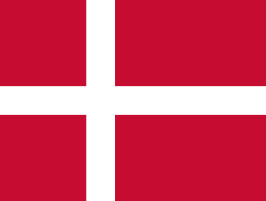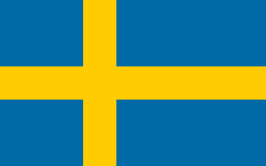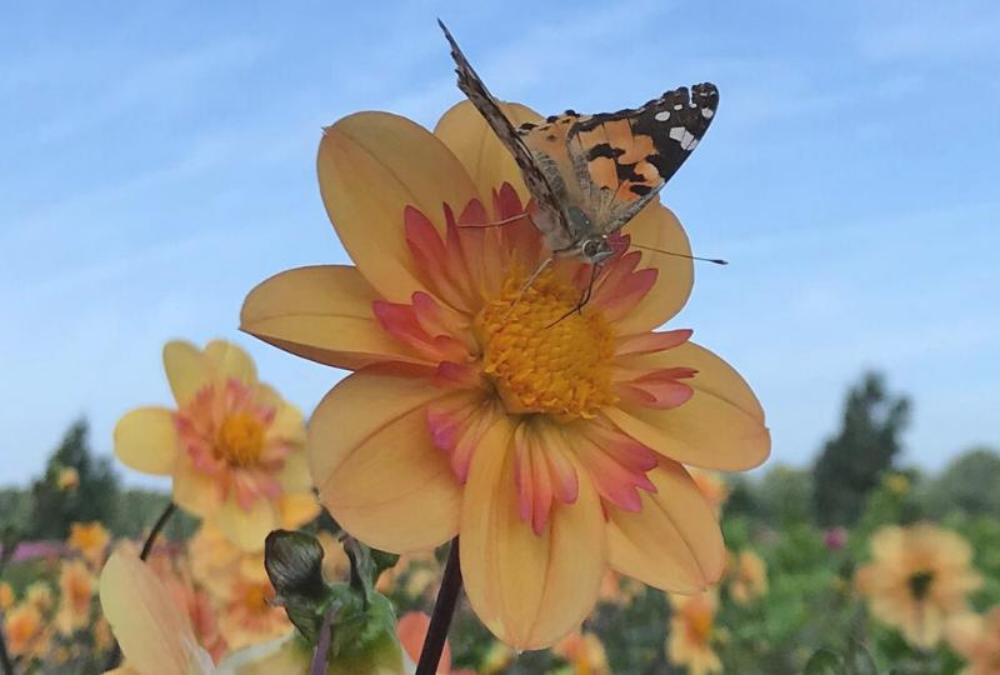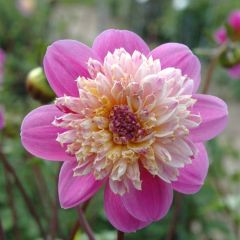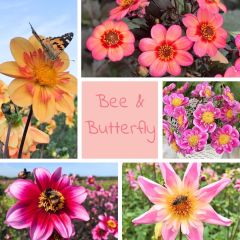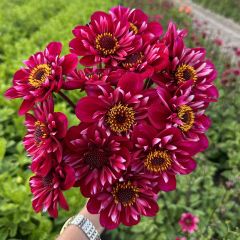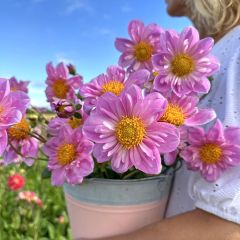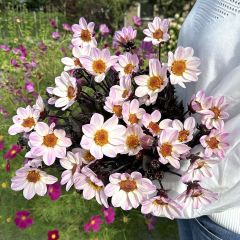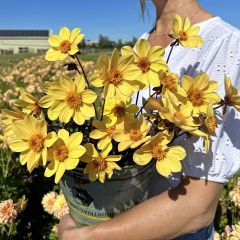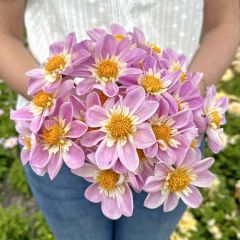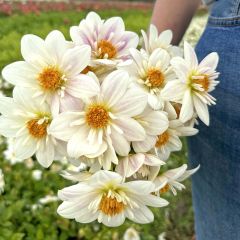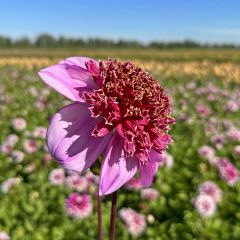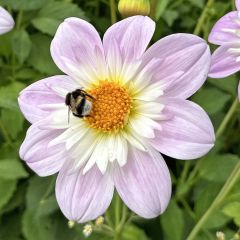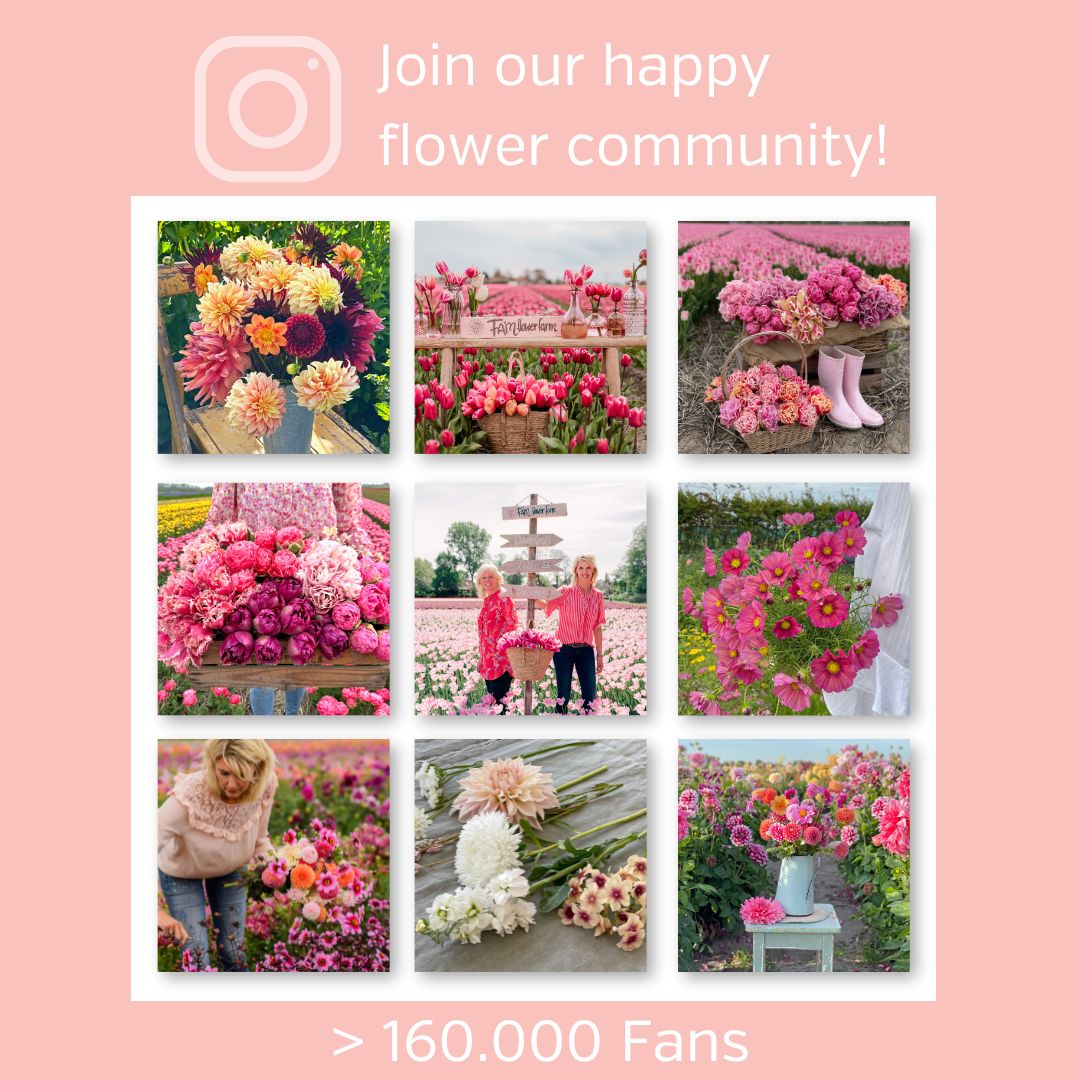Do you want more fluttering and buzzing in your garden? That's very well possible with our flowers. We give you 5 tips when creating your own bee and butterfly garden, plus 3 more garden tips. These tips can also be applied to pots on your terrace or balcony.
There are 17.000 different species of butterflies and more than 160.000 species of moths flying around in the world. With the latter you may think of those brown moths, but there are the most beautiful specimens among them. And then there are another 20.000 different species of bees. One of them is the honey bee. All those other bees are wild species, like bumblebees.
All these insects look for food in the form of nectar and pollen. So if you plant flowers where they can find them, you attract colourful butterflies and happy bees to your garden or balcony. Creating a butterfly and bee garden will really help these creatures survive.
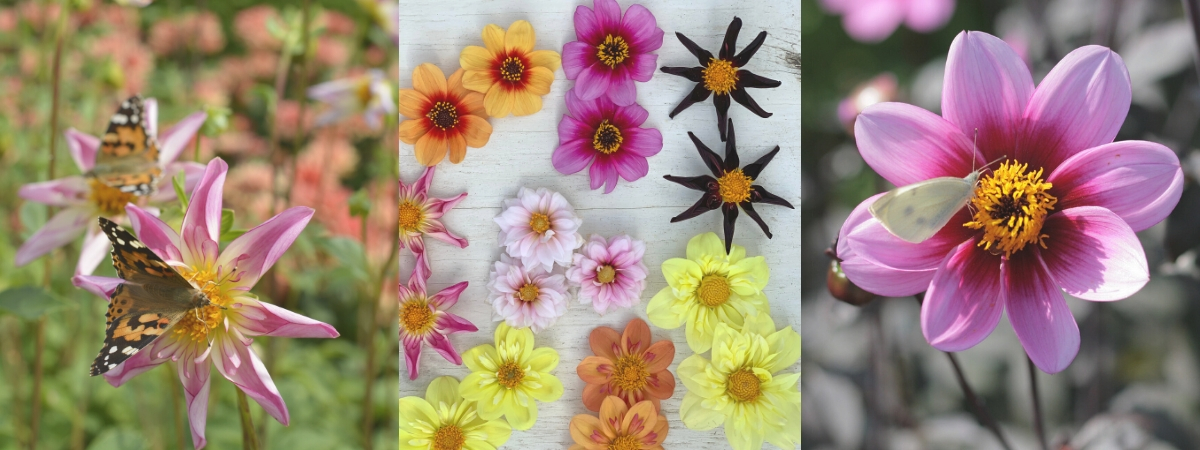
Take care of nature with your beer and butterfly garden
A nice thought is: if you take care of bees and butterflies, you also take good care of the rest of nature. And ultimately for yourself, because bees in particular pollinate our food crops, such as apple blossom and potato flowers, in addition to garden flowers. So spoil them and increase their chances of survival. This is good for the balance in nature and for our own food. And flowers make you happy, so as far as we are concerned, you can always plant more of them.
That's why we say: plant flowers for a better world and your own environment!
What do you pay attention to when creating a bee and butterfly garden? We have five tips.
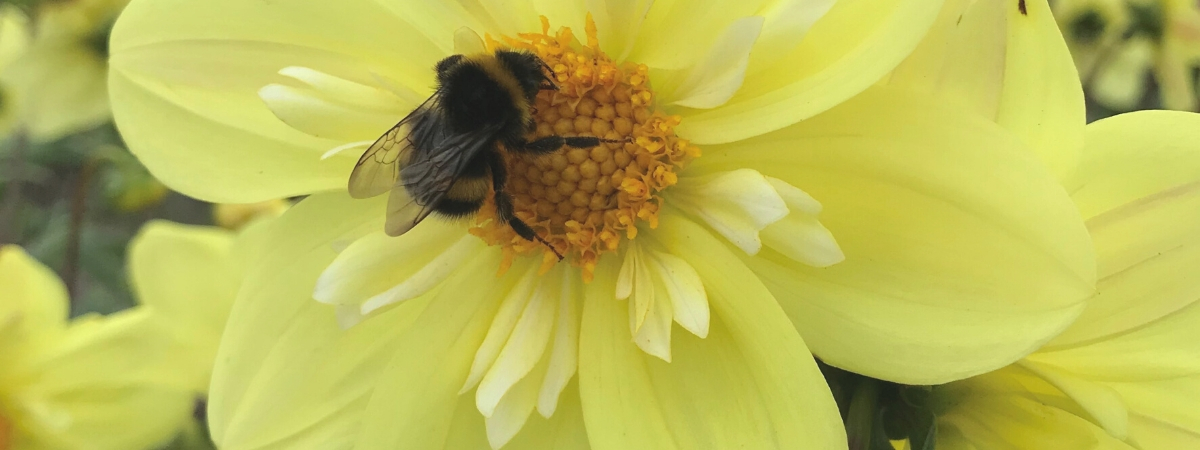
1. Choose the right flowers
The butterflies and bees must be able to get to the delicacies. Each insect is built differently and extracts its nectar or pollen from a flower in a different way. So the shape of the flower is very important.
Butterflies have a long rolling tongue. They use it as a kind of 'straw' to slurp up nectar. Bumblebees can get a lot of pollen with their large hairy bodies, but they have to be able to reach it: they are looking for accessible flowers to land on. Some wild bees are very small and can crawl into something more easily.
If you want to receive a lot of insects, choose for example dahlias with a clearly visible heart. We recommend the following species:
- Edge of joy
- Fancy Pants
- Happy Single Kiss
- Kelsey Annie Joy
- Kelsey Sunshine
- Verrone’s Obsidian
- Wishes N Dreams
- Yellow Bird
2. Offer Sweets
Bees, bumblebees and butterflies search for pollen and nectar from February to late autumn.
Nectar is a kind of sweet syrup, with proteins and vitamins, which mainly attract butterflies, they live off. Honey bees also collect nectar to make honey, their food source.
Pollen consists of protein, fat and vitamins. Bees collect it mainly for their larvae. Butterflies don't need it, because their larvae eat plant-green.
In dahlias, insects find both well.
You can also put some pieces of ripe fruit on a saucer as an extra sweet snack. Don't put that directly on your terrace, but a bit further away.
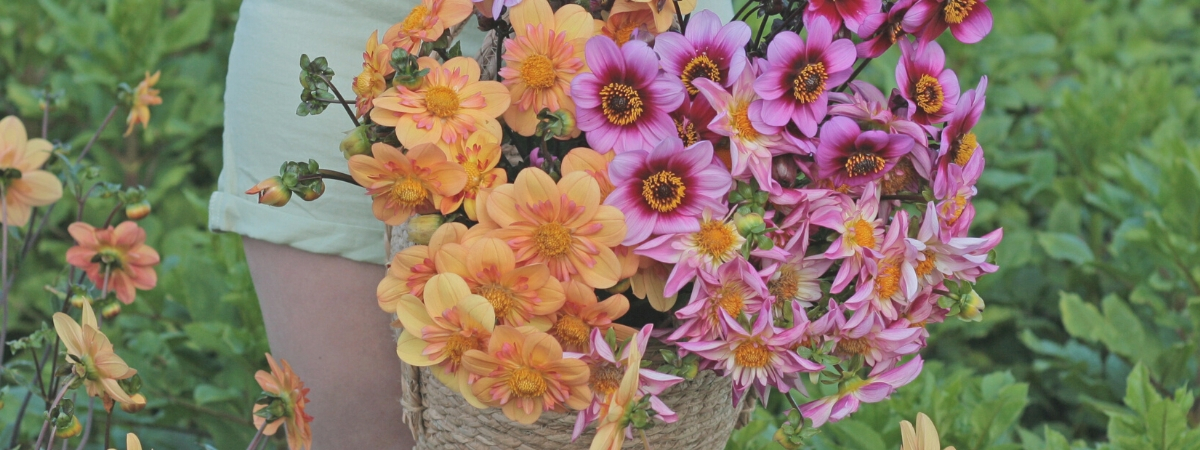
Dahlias with an open heart
3. Let it bloom for months
Provide flowering from March to October. You can do this with spring bulbs and summer bulbs, and sow some annual flower seeds in between.
Dahlias bloom from July to October. They combine very nicely with perennial butterfly and bee plants such as fennel, rocket thistle, bergamot and helianthus (perennial sunflower).
4. Put the flowers in the right place
Make sure the plants are in a sunny, open spot. And preferably provide a 'flower route' so that the butterflies and bees can 'hop' through your garden. Nice if the neighbours join in too!
5. Create drinking opportunities
When it's hot, insects like to drink some water. Therefore plant some pompon dahlias or baldahlias. Water remains in the open tubes after a rainstorm (or after watering the garden). Insects can use this water to suck up some moisture.
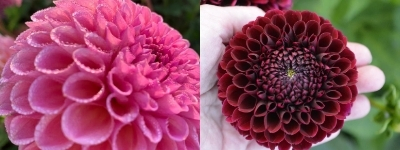
3 more garden tips for a bee and butterfly garden
GARDEN TIP: Daffodils with an open 'tube' in which you can easily see the stamens are a food source for wild bees in early spring. There are also (harmless) parasitic wasps and parasitic flies. That's good, because those same insects will eliminate pests such as the oak processionary caterpillar because they feed them (in pieces) to their larvae. Luring them!
GARDEN TIP: Do not use chemical pesticides or herbicides.
GARDEN TIP: Help butterflies through the winter and leave dead plant remains. Butterflies hibernate in seed pods, under leaves and in hollow stems as an egg, pupa or caterpillar.




